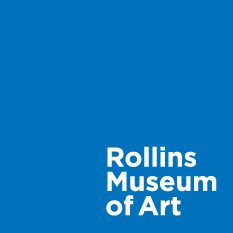As I have written this blog, I have tended to highlight recent scholarship that sheds new light on artists on the collection, or on interesting connections between and among artists and works. Sometimes, however, I find myself simply stopping to appreciate a new discovery. A museum collection is, as I have written before, a unique, almost living thing. It is shaped by sets of policies and collecting practices, to be sure, but also by the individual interests of both supporters and staff. In the case of Tibor Pataky, whom I wrote about way back in the fourth installment of this blog, there was a local connection. In the case of another lesser known but fascinating artist, Jean Charlot, the connection was between Amy Galpin, CFAM’s Curator until February 2018, and collectors Charles and Julie Day Pinney. Galpin is an expert on Charlot, having written her dissertation on him and another Mexican muralist, Alfred Ramos Martinez.1 This is a fascinating and wonderful part of the building of a museum’s collection. As curatorial staff come and go, they make their marks on the collection, giving it an organic sense of growth as it responds to their strengths, interests, and contacts.
Charlot was, as I mentioned, involved in the Mexican muralist and modernist movements during the 1920s and 1930s. If you have an ear for languages, however, you might be wondering about Charlot’s name, or the fact that he was born in Paris. How is this Frenchman a key figure in Mexican modernism? The answer comes from his ancestry, and from the ongoing impact of European colonialism in the Americas. Charlot had Aztec ancestry through his mother, whose French family had lived in Mexico during the brief and ill-fated Napoleonic takeover of Mexico under Emperor Maximilian.2 Charlot took this ancestry seriously, studying Nahuatl and otherwise seeking to understand indigenous Mexican culture.3 After a childhood in Paris and service in World War I, Charlot moved to Mexico City with his mother after his father’s death, bringing with him a group of woodcuts and other prints made by early twentieth century French artists. Meeting Díaz de León and Fernando Leal, two Mexican artists interested in printmaking, he set up a workshop and helped inspire them and other Mexican modernists’ experiments in the genre.4

The Great Builders II, 1930, Lithograph, 15 3/4 x 21 in. (40.01 x 53.34 cm) print
Gift of Charles and Julie Day Pinney, 2017.11.11
Charlot and his elderly mother left Mexico in 1929 during the Maximato, a period of political chaos in Mexico, settling in New York before Charlot moved to Hawai’i in 1949, after her death.5 In New York he was introduced by fellow muralist José Clemente Orozco to master printmaker George Miller, with whom he worked on The Great Builders, a large lithograph depicting the construction of Mexico’s monumental stone pyramids. It is based on his careful study of Mexica and Nahuatl language and culture, as well as his deep engagement with the medium. The Great Builders II, which was traced onto the lithographic stone directly from the first print, was an attempt to resolve some of the compositional problems he encountered while he worked on the first, and apparently caused him considerable difficulty.6

Whatever difficulty he had, today the print is a strong capstone to his early career, blending the formal angularity of his cubist-derived modernism with the forms of human representation he gleaned from his study of Mexica culture. Charlot would apply that same meticulous study of language and culture in the many murals and prints he made depicting other indigenous cultures, including in Arizona and Hawai’i, where he spent the last thirty years of his life. Sorcerer in Hala Grove is a wonderful example of his Hawai’ian work, combining his study of Hawai’ian iconography and foodways with a joyful appreciation of color and the monumental flatness he had developed since his days in Mexico.
1 Amy Galpin, “A Spiritual Manifestation of Mexican Muralism: Works by Jean Charlot and Alfredo Ramos Martínez” (Chicago, Ill., University of Illinois at Chicago, 2013).
2 John Charlot, “Jean Chariot and Classical Hawaiian Culture,” The Journal of Pacific History 41, no. 1 (2006): 61. Charlot and his son John, who wrote this article, used the term Aztec, which was coined by a German scholar named Alexander von Humboldt in the nineteenth century. The Nahuatl speakers who dominated the political and military alliance that ruled the Valley of Mexico in the 15th and early 16th centuries were called the Mexica, and the empire that they ruled has come to be called Aztec.
3 Charlot, 61–64.
4 John W. Ittmann et al., eds., Mexico and Modern Printmaking: A Revolution in the Graphic Arts, 1920 to 1950 (Philadelphia : San Antonio : New Haven: Philadelphia Museum of Art ; McNay Art Museum ; in association with Yale University Press, 2006), 11, 90.
5 Ittmann et al., 59.
6 Peter Morse, Jean Charlot’s Prints: A Catalogue Raisonné (Honolulu: University Press of Hawaii, 1976).

